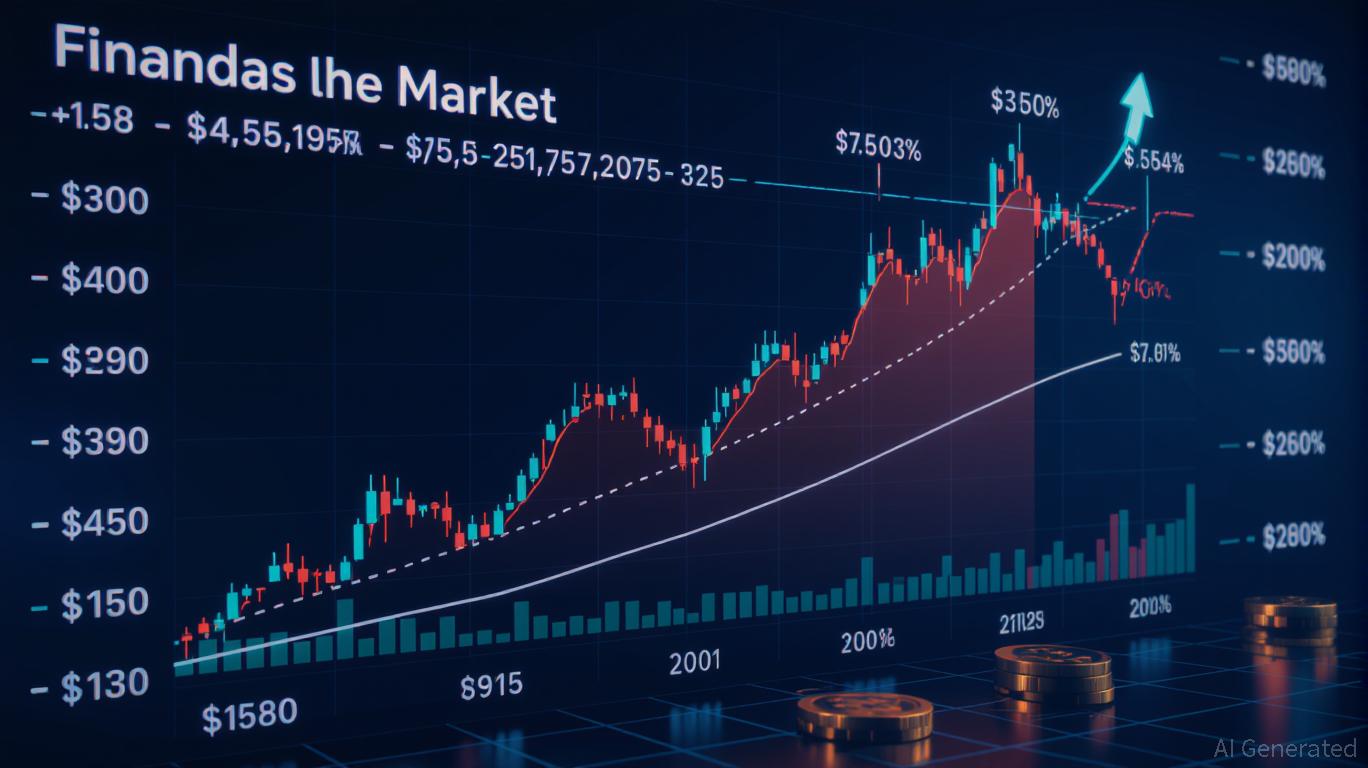Tether Transforms Stablecoin Functionality through RWA Integration and Bitcoin Growth
- Tether CEO Paolo Ardoino claims the company is in the "0.25 stage" of growth, emphasizing expansion beyond stablecoins into blockchain infrastructure and real-world asset (RWA) integration. - The strategy includes sustainable Bitcoin mining in Latin America and acquiring Bitcoin treasury firm Twenty One Capital to strengthen BTC reserves and institutional adoption. - Tether rejects a $515B valuation as "bearish," prioritizing infrastructure development over public listing while addressing macroeconomic r

Paolo Ardoino, CEO of Tether, has highlighted the company’s considerable room for growth, describing
Ardoino’s strategy involves using Tether’s leading position in the stablecoin arena to promote institutional use and facilitate cross-border financial services. Central to this plan is the USDT stablecoin, which provides liquidity across various major blockchains. Tether is also investing in sustainable
On the financial side, Tether remains a privately held company with no immediate intentions to go public, despite ongoing speculation about its worth. Ardoino dismissed a $515 billion valuation as “bearish,” arguing that it fails to recognize the company’s increasing reserves of Bitcoin and gold. Tether’s recent purchase of Twenty One Capital, a Bitcoin treasury company, has further strengthened its presence in the Bitcoin space. This acquisition increased Tether’s Bitcoin assets, with $3.9 billion in
While Ardoino remains optimistic, he also recognizes the challenges posed by global economic instability and regulatory pressures. Although Tether continues to prioritize innovation, Ardoino cautioned about the dangers of corporate exposure to Bitcoin, noting that a significant market downturn could have widespread consequences. “The next crash won’t be limited,” he suggested, echoing concerns from policymakers such as Elizabeth Warren about potential systemic risks. Nevertheless, Tether’s focus on infrastructure and sustainability sets it apart from more speculative corporate Bitcoin approaches.
Experts consider Tether’s growth path crucial for the evolution of the crypto market. By connecting traditional finance with decentralized networks, Tether’s projects could improve Bitcoin’s effectiveness in remittances, commerce, and financial inclusion. Ardoino’s emphasis on scalability, including support for the Bitcoin Lightning Network, seeks to overcome obstacles related to transaction speed and costs. This approach is in line with the industry’s broader movement toward institutional participation and regulatory transparency, which Tether aims to pursue while maintaining its decentralized principles.
Source: [1] Tether CEO Forecasts Significant Future Growth Potential [2] Tether CEO Paolo Ardoino says 'no need to go public' [3] Tether CEO Paolo Ardoino Predicts Strong Future for Bitcoin in ... [4] Corporate Bitcoin Buying Spree: Booming Strategy Or Ticking
Disclaimer: The content of this article solely reflects the author's opinion and does not represent the platform in any capacity. This article is not intended to serve as a reference for making investment decisions.
You may also like
Zcash Halving and Its Effects on the Crypto Market
- Zcash's potential 2025 halving, though unconfirmed, drives speculative optimism and price surges amid privacy-focused crypto trends. - Network upgrades like ephemeral addresses and zenZEC cross-chain tokens enhance Zcash's utility, boosting DeFi integration and trading volume. - Institutional adoption grows as Arthur Hayes' Maelstrom allocates ZEC as second-largest holding, reflecting privacy-utility balance in portfolios. - Market dynamics highlight tension between halving hype and tangible upgrades, wi

ICP Network's Expansion: Reaching New Milestones in Blockchain Foundations and Business Integration
- ICP's AI tool Caffeine drove a 56% price surge, attracting investors and developers with scalable blockchain infrastructure. - Enterprise partnerships with Microsoft , Google, and medical/industrial IoT projects highlight real-world adoption. - Despite 22.4% DApp decline and volatility, ICP's 100x fee surge and Chain Fusion protocol signal resilience and growth. - Speculation about Coinbase Launchpad inclusion and cross-chain swaps with major blockchains position ICP as a decentralized finance bridge.

Zcash Halving and Its Effects on Cryptocurrency Value: The Role of Limited Supply and Shifts in Investor Actions After Halving
- Zcash's 2024 halving reduced block rewards by 50%, tightening its deflationary supply model to 4% annual inflation by 2025. - Transition to proof-of-stake (PoS) lowered energy costs and attracted institutional investors, stabilizing network security. - ZEC surged 92% post-halving in 2025, driven by scarcity narratives, regulatory clarity, and Trump-era crypto optimism . - 2028's next halving will further cut rewards to 0.78125 ZEC, potentially accelerating price growth amid evolving crypto adoption. - Sc

Zcash (ZEC) Price Rally in Late October 2025: Impact of Institutional Adoption and Focus on Privacy-Driven Applications
- Zcash (ZEC) surged 266% in late October 2025, peaking at $382, driven by institutional interest and demand for privacy-focused crypto amid rising surveillance. - Open interest in Zcash futures hit $244M, reflecting growing speculative and institutional capital allocation to privacy-centric assets like ZEC. - Helius CEO Mert Mumtaz predicted ZEC could surpass XRP in market cap, framing privacy as a "moral duty" against compliance-driven tokens. - Zcash's zk-SNARKs technology and cross-chain integrations (
